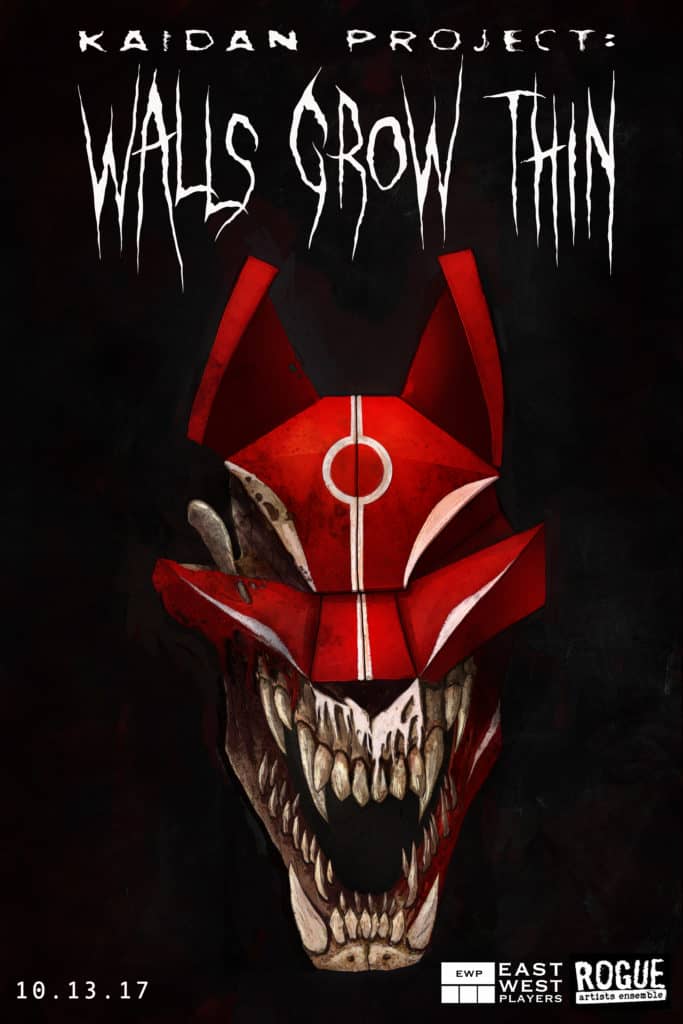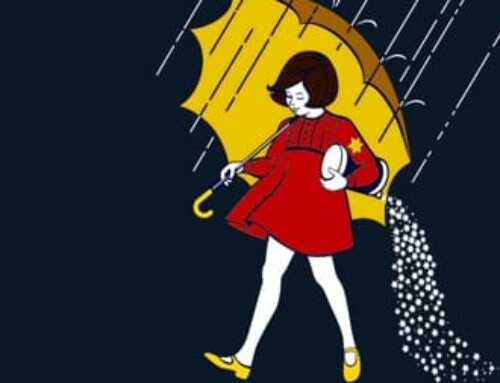Japanese folklore has always interested me. Long before I saw the Americanized version of THE RING, I had read the original novel, which lead me down the rabbit hole of other Japanese horror tales, which in turn, spun into an obsession with Japanese folklore overall. While I already had a healthy interest in the cryptids of North America, the creatures of Japan made them look like chump change!
So, when Kaidan Project: Walls Grow Thin was announced earlier this year, I was absolutely intrigued by it. While I have not had the pleasure of seeing the show yet (but soon! I promise!), I have been hearing nothing but great things since they opened. I had to reach out to the creators over at Rogue Artists to ask them a few questions about this show, because I am absolutely on board for this! Rogue Artists’ Artistic Director Sean T Cawelti, along with writers Lisa Dring and Chelsea Sutton were kind enough to respond.
HorrorBuzz: As someone who loves Japanese folklore in general, I was pretty excited to hear about this. What interested Rogue Artists as a team in basing a show around it?
Sean T. Cawelti: Rogue had been interested in these stories for many years, having first peaked our interest after reading a collection of shapeshifting animal stories some 7 years ago. Since then the show has gone through many evolutionary and revolutionary twists and turns to become what it is today.

HorrorBuzz: In staging a show such as this, how true to the actual lore do you stay? Did you add any of your own spin on it?
Sean T. Cawelti: We do both! There are moments that we all wanted to feel like time travel was afoot and so you experience moments that feel of a different time and place and much more traditional. However, there are also great remixes done and our own spin has been added on everything. We felt it important to stay true to the core of each story or fable but also felt free to take liberties in order to make it our own, a product of this very eclectic multicultural community of artists working to conceive the production.
HorrorBuzz: Lisa and Chelsea, as the writers, what about the Japanese culture drew you to write this show?
Lisa Dring: I’m half-Japanese. In spending time with these stories I’ve gotten to hang out in the space of wondering about the beliefs and psyche of my ancestors.
Asking ‘how do we distill and translate these tales for the modern American crowd?’ helps me ask a question underneath it, which is ‘how can I connect with the lives of my grandparents and great-grandparents?’ Also, Japanese culture is endlessly fascinating and beautiful. So there’s that.
Chelsea Sutton: I’ve always been a ghost story nerd, and ghosts in Japanese folklore function very differently from ghosts in the Western world. The cyclical nature of their existence and their more direct connection and effect on the living make them unique, beautiful, tragic, and disturbing on a whole other level.
HorrorBuzz: Sean, as the director, did you get any of your inspiration from the various Japanese horror films that have come out as of late?
Sean T. Cawelti: I love horror movies but truthfully inspiration has come from Kurosawa’s and Miyazaki’s film which were both tonally and visually more interesting. A lot of inspiration came from traditional Japanese performing arts conventions including Bunraku puppetry, Noh and Kabuki theater.
HorrorBuzz: Without having seen it yet, I have heard (and read in your releases!) that it involves a lot of puppetry work. What made you guys decide to go that route? I personally think it’s pretty ingenious!
Sean T. Cawelti: Puppetry is a huge part of traditional storytelling in Japan and has been a part of all of the Rogue’s work since the company was formed. As a company, we love blurring the line between puppets and humans and always ask during the development process what is the best way to tell each story. There is something extra potent about the puppetry used in this show because you never see a puppeteer which was a huge goal we had set early on so that nothing takes you out of the experience. There are moments that feel like seductive magic is afoot.

HorrorBuzz: Just curious, does the actual warehouse this is staged in play into the story at all?
Sean T. Cawelti: It does! The location is a real storage facility (still in use today) and the backstory being set in a storage facility is a direct homage to the place itself. We wanted to have the entry point be one that was easily managed so the first scenes are set within the dock and offices of the storage facility…. But that changes quickly.
HorrorBuzz: How did you team up with the East West Players for it? What was that collaboration like?
Sean T. Cawelti: We first started discussing a collaboration with East West Players many years ago with Tim Dang who used to the Artistic Director. Tim was incredibly supportive of exploring the ghost stories from Japan and now years later we have a fabulous partnership to present this piece. East West Players has been supportive throughout the development process assisting with developing the concept through providing thoughtful feedback and also providing access to some resources that really helped the production soar.
Thank you to Sean, Lisa, and Chelsea for answering our questions!
Kaidan Project: Walls Grow Thin is running now until November 5th at a secret warehouse location. For more information, and to buy tickets, visit them online at: https://www.rogueartists.org







